Top Rankings
Robinson CUSD 2 School District ranks among the top 20% of public school district in Illinois for:
Category
Attribute
Graduation Rate
Highest graduation rate (Top 20%)
For the 2025 school year, there is 1 public preschool serving 406 students in Robinson CUSD 2 School District.
Public Preschools in Robinson CUSD 2 School District have a diversity score of 0.20, which is less than the Illinois public preschool average of 0.70.
Minority enrollment is 11% of the student body (majority Hispanic), which is less than the Illinois public preschool average of 58% (majority Hispanic).
Overview
This School District
This State (IL)
# Schools
4 Schools
1,387 Schools
# Students
1,538 Students
512,005 Students
# Teachers
114 Teachers
38,167 Teachers
Student : Teacher Ratio
13:1
13:1
District Rank
Robinson CUSD 2 School District, which is ranked within the top 50% of all 844 school districts in Illinois (based off of combined math and reading proficiency testing data) for the 2020-2021 school year.
The school district's graduation rate of 90-94% has increased from 85-89% over five school years.
Overall District Rank
#365 out of 852 school districts
(Top 50%)
(Top 50%)
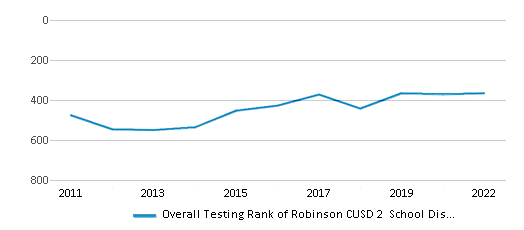
Math Test Scores (% Proficient)
(20-21)21%
28%
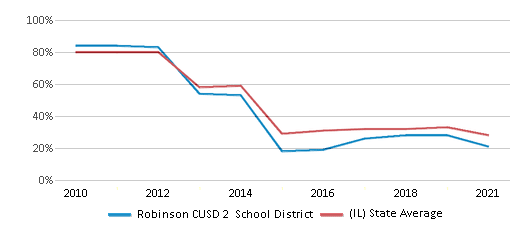
Reading/Language Arts Test Scores (% Proficient)
34%
30%
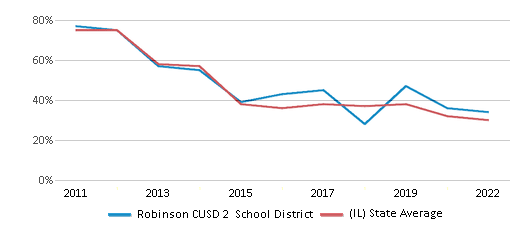
Science Test Scores (% Proficient)
54%
50%
Graduation Rate
90-94%
87%
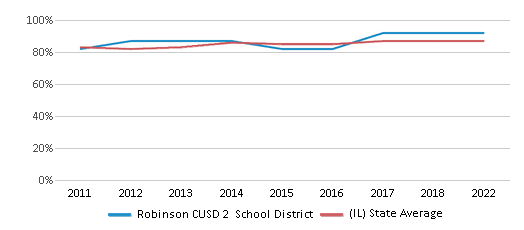
Students by Ethnicity:
Diversity Score
0.17
0.70
# American Indian Students
n/a
1,218 Students
% American Indian Students
n/a
n/a
# Asian Students
5 Students
20,502 Students
% Asian Students
1%
4%
# Hispanic Students
48 Students
162,757 Students
% Hispanic Students
3%
32%
# Black Students
14 Students
94,002 Students
% Black Students
1%
18%
# White Students
1,404 Students
213,555 Students
% White Students
91%
42%
# Hawaiian Students
2 Students
447 Students
% Hawaiian Students
n/a
n/a
# Two or more races Students
65 Students
19,465 Students
% of Two or more races Students
4%
4%
Students by Grade:
# Students in PK Grade:
86
76,065
# Students in K Grade:
107
71,052
# Students in 1st Grade:
98
68,700
# Students in 2nd Grade:
115
66,332
# Students in 3rd Grade:
110
56,657
# Students in 4th Grade:
95
53,643
# Students in 5th Grade:
118
46,874
# Students in 6th Grade:
124
28,049
# Students in 7th Grade:
106
22,127
# Students in 8th Grade:
109
22,424
# Students in 9th Grade:
126
40
# Students in 10th Grade:
121
12
# Students in 11th Grade:
98
12
# Students in 12th Grade:
125
18
# Ungraded Students:
-
-
District Revenue and Spending
The revenue/student of $17,412 in this school district is less than the state median of $21,990. The school district revenue/student has stayed relatively flat over four school years.
The school district's spending/student of $15,577 is less than the state median of $21,244. The school district spending/student has stayed relatively flat over four school years.
Total Revenue
$27 MM
$41,381 MM

Spending
$24 MM
$39,976 MM

Revenue / Student
$17,412
$21,990
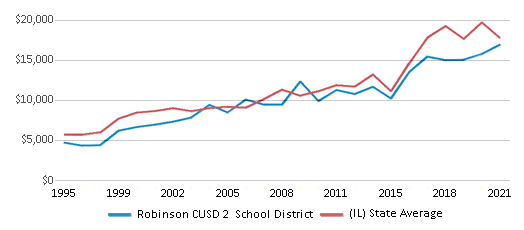
Spending / Student
$15,577
$21,244
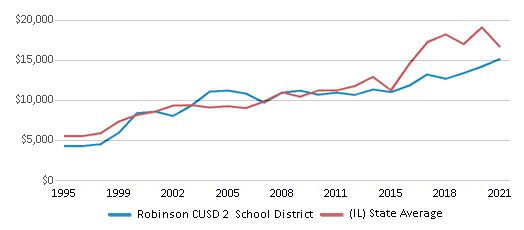
Best Robinson CUSD 2 School District Public Preschools (2025)
School
(Math and Reading Proficiency)
(Math and Reading Proficiency)
Location
Grades
Students
Rank: n/an/a
507 W Condit St
Robinson, IL 62454
(618) 544-2233
Robinson, IL 62454
(618) 544-2233
Grades: PK-2
| 406 students
Recent Articles

How Scaffolding Could Change the Way Your Child Learns
This article explores the concept of instructional scaffolding, a teaching method that enhances learning by breaking down complex tasks into manageable parts. It highlights how scaffolding supports students in developing critical thinking skills and becoming more independent learners. The article discusses the benefits of scaffolding, including improved engagement and reduced anxiety, and provides strategies for its implementation across various educational levels.

The Impact of Coronavirus on Public Schools
This article discusses the widespread impact of COVID-19 on public schools, addressing issues such as school closures, remote learning challenges, effects on standardized testing, and concerns about student progress. It also provides tips for parents suddenly faced with homeschooling responsibilities.

February 05, 2025
Understanding the U.S. Department of Education: Structure, Impact, and EvolutionWe explore how the Department of Education shapes American education, from its cabinet-level leadership to its impact on millions of students, written for general audiences seeking clarity on this vital institution.





